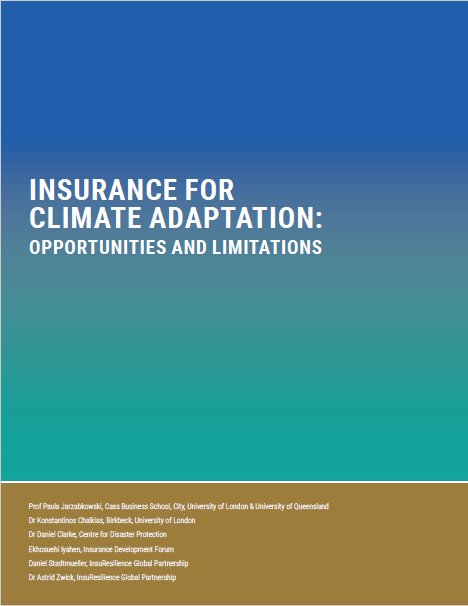Climate change jeopardizes socioeconomic stability and sets back efforts at development. The increasing frequency and severity of climate-change-driven disasters threaten lives and livelihoods, food security, water supply, property security, and economic prosperity across the globe. Adaptation is vital to make society resilient to the impacts of climate change. Adaptation means increasing our ability to recover from specific disasters; reducing vulnerability and promoting resilience (both physical and financial) to catastrophe. Insurance can be a key tool in both these aspects of adapting to climate change. Using insurance is a step away from crisis towards risk management, and it strengthens socio-economic resilience under a changing climate. However, it is only one of the available disaster-risk financing mechanisms. It thus needs to be considered within a broader fiscal framework that also includes international assistance, catastrophe debt drawdowns, and other financial securities, disaster reserves and budgets. Furthermore, insurance and other disaster risk financing mechanisms are only part of the solution: they need to be integrated into other resilience and adaptation measures as part of a comprehensive climate adaptation strategy. In this report, we make recommendations to maximize the benefits of insurance for climate adaptation.

